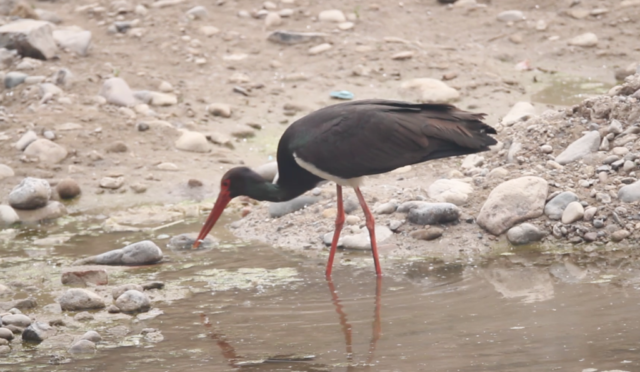Li Li paints animals for a living. When not painting, he protects what inspires him, in the mountains around Beijing. “There is no conflict between nature and man,” he says with a conviction that indicates he is expecting some push back. “I think conflicts mainly occur because of interest. People are sometimes greedy.”
Li and his team search for poachers and destroy their nets and traps. On one mission, they almost lost their lives. “By the time we went up the mountain and got to where they set up the nets to trap eagles, the poachers had run away,” Li recalls. “When we climbed onto the first precipice, we had to move to another one without anything beneath our feet. I wanted to go down the mountain but I saw no other way. My whole body was shivering and sweating. We had nothing to protect us.”
Surprising as it may seem, within Beijing’s city limits there is a vast array of wildlife, often quoted as exceeding the total of London, Paris and New York. Much of it comes from migratory birds, 400 species of which have been recorded in the city. They fly north during the spring to breed and pass through again in autumn before the winter sets in.
Although China boasts the most biodiversity outside of the tropics, its wildlife has to share its habitat with the world’s largest population of humans. Over 840 species are under threat of extinction. But thanks to the work of an increasing number of wildlife protection groups, such as Li Li’s, and new protection laws, the movement to protect endangered species is gathering momentum.
Luckily, Li and his team got out relatively unscathed from their close encounter with the poachers. But even though the mission is dangerous, Li feels he must go on. “Why are we doing this? Because we want to solve conflicts between people and wild animals. We play the role of a bridge.”
Share your stories of change in China @CCTVNEWS or via colors@cctvnews.cn.
 CGTN America
CGTN America



